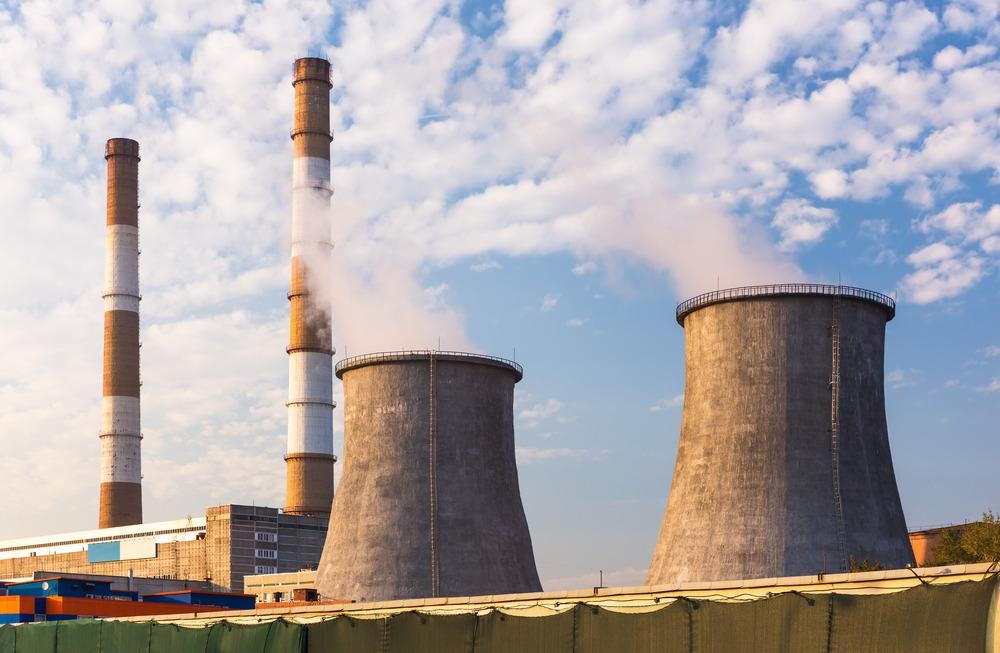Thermoelectric materials are capable of generating electrical energy directly from waste heat. As a result, these unique materials have garnered much interest from scientists as a potential source of renewable energy in a number of applications where surplus heat can easily be harvested and recycled. In a recent paper published in Nature Materials, a team of researchers from Seoul National University demonstrate the production of a record-breaking thermoelectric material with less toxic and more economical components.

Image Credit: Gubin Yury/Shutterstock.com
The conversion efficiency of thermoelectric materials is governed by the figure of merit, or ZT, which equals S2σT/κtot, where S is the Seebeck coefficient, σ is the electrical conductivity, T is the absolute temperature, and κtot is the total thermal conductivity from the electrical (κele) and lattice vibration contribution (κlat).
Boosting the thermoelectric conversion efficiency requires a large increase in power factor, S2σ, and decreasing thermal conductivity, in particular suppressing κlat. However, this is a challenging process, and it is difficult to optimize such parameters independently because of their close interrelationships.
Super SnSe
Current thermoelectric materials typically contain toxic elements like lead or rare elements like tellurium. They also have poor power generation efficiencies, which makes it problematic to commercialize this promising technology. However, tin selenide, SnSe, has emerged as an outstanding thermoelectric material, which is both surprising and shows great potential among the state-of-the-art thermoelectric systems.
The material combines both a highly effective, inherent ultralow thermal conductivity, and a favorable electronic band structure with multiple bands that contribute to charge transport, resulting in an ultrahigh power factor.
Until recently, this was only observable in single crystal samples of SnSe, which have a ZT value of 2.6 at 913 K. These single crystals, however, are not suitable for mass production or commercialization because of their high cost, long and labor-intensive production, and mechanical brittleness.
Polycrystalline materials are much better suited to commercialization, but their ZT value is much lower. Scientists believe the poor performance of polycrystalline samples can be attributed to traces of tin oxide on the surface of their powders, increasing thermal conductivity and reducing electrical conductivity and, therefore, ZT values.
The path to ultrahigh thermoelectric performance in polycrystalline samples is the efficient removal of tin oxides films from the surface, say the team led by Professor In Chung. They have developed a two-step process to remove oxygen and minimize the presence of tin oxides, reducing the thermal conductivity and increasing the power factor, “thereby uncovering the extraordinarily high thermoelectric performance of polycrystalline SnSe.”
History Made by Increasing ZT
The Korean team reports “hole-doped SnSe polycrystalline samples with reagents carefully purified and tin oxides removed exhibit a ZT of roughly 3.1 at 783 K. Its lattice thermal conductivity is ultralow at roughly 0.07 W m–1 K–1 at 783 K, lower than the single crystals.”
Its new bulk polycrystalline material demonstrates a ZT value greater than 3.1 in bulk form for the first time in history and a record-breaking thermoelectric power generation efficiency that exceeds 20%. Furthermore, the team's material is less toxic and inexpensive compared to other thermoelectric materials.
Our new material could open an era of commercialization of ultrahigh performance practical thermoelectrics.
In Chung, Professor, College of Engineering, Seoul University
The Future of Thermoelectric Materials
Around 65% of the energy produced worldwide is lost as waste heat. Employing thermoelectric materials to directly convert waste heat into useful electrical energy could help solve the energy crisis and reduce the volumes of harmful gases released into the atmosphere by burning fossil fuels. Removing lead from the material is a further environmental benefit.
Since thermoelectric power generators - semiconductor-based electronic devices - contain no moving parts, this is an eco-friendly means of recovering and recycling as much waste heat as possible.
References and Further Reading
Zhou, C. et al. (2021) Polycrystalline SnSe with a thermoelectric figure of merit greater than the single crystal, Nature Materials. Available at: https://doi.org/10.1038/s41563-021-01064-6 (Accessed 17 August 2021).
Seoul National University (2021) New record-breaking thermoelectric material. EurekAlert. [Online] Available at: https://www.eurekalert.org/news-releases/9242140 (Accessed 17 August 2021).
Yang, G. et al. (2020) Enhancing the Thermoelectric Performance of Polycrystalline SnSe by Decoupling Electrical and Thermal Transport through Carbon Fiber Incorporation, ACS Applied Materials & Interfaces. Available at: https://pubs.acs.org/doi/10.1021/acsami.0c00873 (Accessed 17 August 2021).
Disclaimer: The views expressed here are those of the author expressed in their private capacity and do not necessarily represent the views of AZoM.com Limited T/A AZoNetwork the owner and operator of this website. This disclaimer forms part of the Terms and conditions of use of this website.